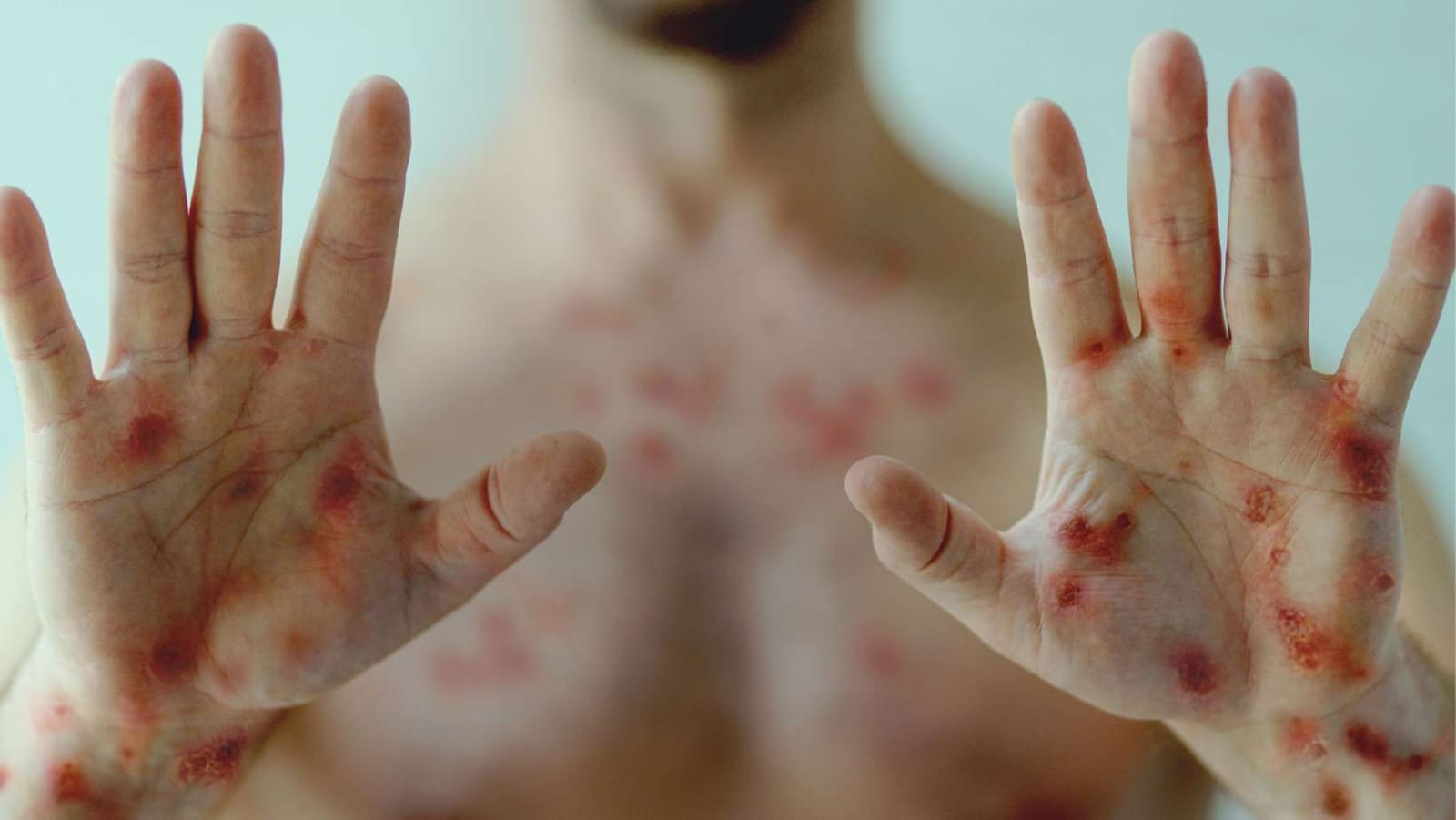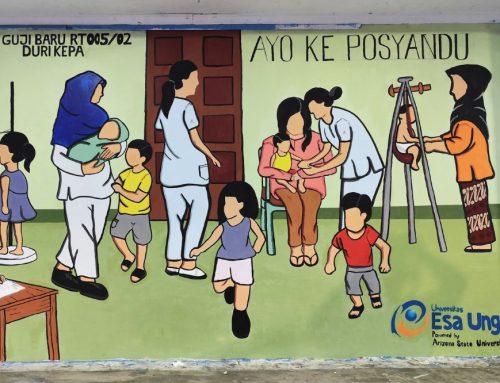
Recently, the World Health Organization (WHO) has again issued a warning regarding the worsening spread of the Mpox outbreak in the African Region, especially the Democratic Republic of Congo.
So what causes this Mpox outbreak to spread again and be declared a medical emergency in the world?
Prof. Maksum Radji, Professor of Microbiology in the Pharmacy Study Program at Esa Unggul University, gave his opinion on the causes of the outbreak of this disease.
Starting this conversation, Prof. Maksum explained that the World Health Organization (WHO) has declared a public health emergency of international concern (PHEIC) for the outbreak of Mpox, previously known as monkeypox or monkey pox.
This massive spike in Mpox cases is the second in the last 2 years, prompting the WHO on August 15, 2024, to declare the Mpox outbreak a global medical emergency.
The announcement of the emergency was accelerated after Swedish health officials confirmed the detection of a case of this new variant of Mpox as the first infection detected outside of Africa.
What is Mpox
Reporting from the page https://www.who.int/news-room/fact-sheets/detail/mpox, the Mpox outbreak, previously known as monkeypox, is a disease caused by monkeypox virus (MPXV).
This virus is an enveloped double-stranded DNA type virus of the Orthopoxvirus genus in the Poxviridae family.
There are 2 distinct clades of the virus: clade I (with sub-clades Ia and Ib) and clade II (with sub-clades IIa and IIb). Clade I is considered more severe and more rapidly transmissible than MPXV Clade II.
The global outbreak of Mpox in 2022 was caused by sub-clade IIb in Africa including some European and Asian countries.
While in 2024 there was an increase in Mpox outbreaks caused by sub-clades Ia and Ib in the Democratic Republic of Congo and in other countries in Africa.
By August 2024, sub-clade Ib had also been detected outside Africa, including in Sweden, the Philippines and Thailand.
How Mpox is Transmitted
Mpox spreads from person to person mainly through close contact with someone who has Mpox, including household members.
This close contact includes skin-to-skin contact, sex and mouth-to-mouth contact and can also be through droplets of saliva from a person with mpox to people around them.
People can also contract Mpox from contaminated objects such as clothing, through shared needles contaminated with Mpox virus.
Transmission of Mpox virus can also occur from a pregnant woman to her unborn child, or during the birth process from a Mpox infected mother to her baby.
Mpox outbreaks transmitted during pregnancy can cause harm to the fetus such as miscarriage, stillbirth, newborn death, or other complications.
Mpox transmission can also occur from animals to humans through the bite or scratch of an animal carrying the Mpox virus.
According to WHO, until the end of August 2024, the Government of the Democratic Republic of Congo reported 18,000 cases of Mpox, both sub-clade I and sub-clade Ib.
A total of 615 people died in the Democratic Republic of Congo due to Mpox. This exceeds the total number of cases recorded in 2023.
Mpox Symptoms
According to https://www.newscientist.com/article/2444398-everything-you-need-to-know-about-the-mpox-outbreak/ the Mpox rash often appears on the face and spreads throughout the body, to the palms of the hands and soles of the feet.
The rash may also appear on other affected parts of the body, such as the mouth, genitals or anus.
The rash starts as flat lesions, which then develop fluid-filled blisters that may be itchy or painful. As the rash heals, the lesions dry up, harden and flake off.
Some people may have one or a few skin lesions, while others have hundreds or more. These lesions can appear on any part of the body.
The rash and lesions usually last between 2-4 weeks and are often accompanied by other symptoms such as fever, headache, muscle aches, back pain, fatigue, and swollen lymph nodes.
Symptoms usually start within a week of contracting the virus, but can start from one to 21 days after exposure.
Children, pregnant women, and people with weakened immune systems, including those with poorly controlled HIV, are at higher risk of serious illness and death from complications from Mpox.
Some people who get Mpox can be particularly severe if there is bacterial co-infection of the skin which can cause serious skin damage.
Other complications include pneumonia, infection of the cornea of the eye, pain or difficulty swallowing, vomiting and diarrhea, sepsis, inflammation of the brain (encephalitis), heart (myocarditis), and infection of the genital organs or urinary tract.
How to Diagnose Mpox Outbreak
Diagnosis of the Mpox virus is important because there are several other diseases that have similar symptoms to Mpox.
Clinical symptoms of Mpox are often similar to those of chickenpox, measles, Singapore flu or hand, foot, and mouth disease (HFMD), herpes, syphilis, bacterial skin infections or other sexually transmitted infections.
A person with Mpox may also have other sexually transmitted infections at the same time, such as syphilis or herpes. In addition, children suspected of having Mpox also often have chickenpox.
For this reason, early testing is very important so that the patient can get treatment as early as possible to prevent the disease from getting worse and spreading further.
The laboratory test for Mpox is the detection of viral DNA by polymerase chain reaction (PCR) technique.
Diagnostic specimens are taken directly from the skin rash, fluid or crusts. If there are no skin lesions, testing can be done using a throat or anal swab.
Blood testing is not recommended. Antibody detection methods may not be useful as they cannot distinguish between different types of orthopoxvirus.
Mpox Cases in Indonesia
According to data from the Indonesian Ministry of Health as of August 17, 2024, there have been 88 confirmed cases of mpox in Indonesia since 2022.
The confirmed Mpox cases are spread across 6 provinces, namely Riau Islands, Banten, DKI Jakarta, West Java, Special Region of Yogyakarta (DIY) and East Java.
DKI Jakarta is the region with the highest number of cases, namely 59 patients, followed by West Java with 13 patients. Banten had 9 patients, followed by East Java with 3 patients, Yogyakarta with 3 patients, and Riau Islands with 1 patient.
However, in early September 2024, several new suspects were reported and are still in the status of examination and confirmation tests.
In addition, the Indonesian Ministry of Health emphasized that sub-clade 1B which is a new Mpox variant has not been detected in Indonesia.
Mpox Outbreak Treatment
The goal of Mpox treatment is to resolve the rash, manage pain, and prevent complications.
Early and supportive care is important to help manage symptoms and avoid complications of Mpox.
To date, several antivirals have received emergency use authorization in some countries and are being evaluated in clinical trials. There is no proven effective antiviral treatment for Mpox.
Therefore, treatment efforts are still focused on optimizing supportive care for patients, including the administration of antibiotics to overcome secondary infections by bacteria.
A preventive measure to avoid infection with the Mpox virus is through a vaccination program.
This vaccination is recommended for people at high risk of contracting Mpox, especially during an outbreak.
Groups at high risk of contracting Mpox include medical personnel who are at risk of exposure, people who live in the same house or in close communities with Mpox sufferers, people who have multiple sex partners, including men who have sex with men; and sex workers.
The vaccine may also be given after a person has been in close contact with someone who has Mpox as a prophylaxis.
In this case, the vaccine should be given less than 4 days after close contact with someone who has Mpox. The vaccine can be given up to 14 days if the person is asymptomatic.
According to the Indonesian Ministry of Health, Indonesia is also preparing 4,450 doses of vaccine for 2,225 high-risk targets with two doses per person, to prevent the spread of Mpox.
The type of Mpox vaccine used in Indonesia is the Modified Vaccinia Ankara-Bavarian Nordic (MVA-BN) class.
This Mpox vaccine is a non-replicating 3rd generation smallpox-derived vaccine that has received recommendations from WHO for use during Mpox outbreaks.
If you are curious about how the manufacture of drugs used can be really precise and effective to cure diseases. you can study at the Universitas Esa Unggul Pharmacy study program.
This study program excels in the field of nutraceuticals, utilizing pharmaceutical science to develop drugs, food supplements, and food from natural ingredients in Indonesia, both for the prevention and treatment of diseases. Therefore, let’s hurry up and enroll in the Universitas Esa Unggul Pharmacy program.







